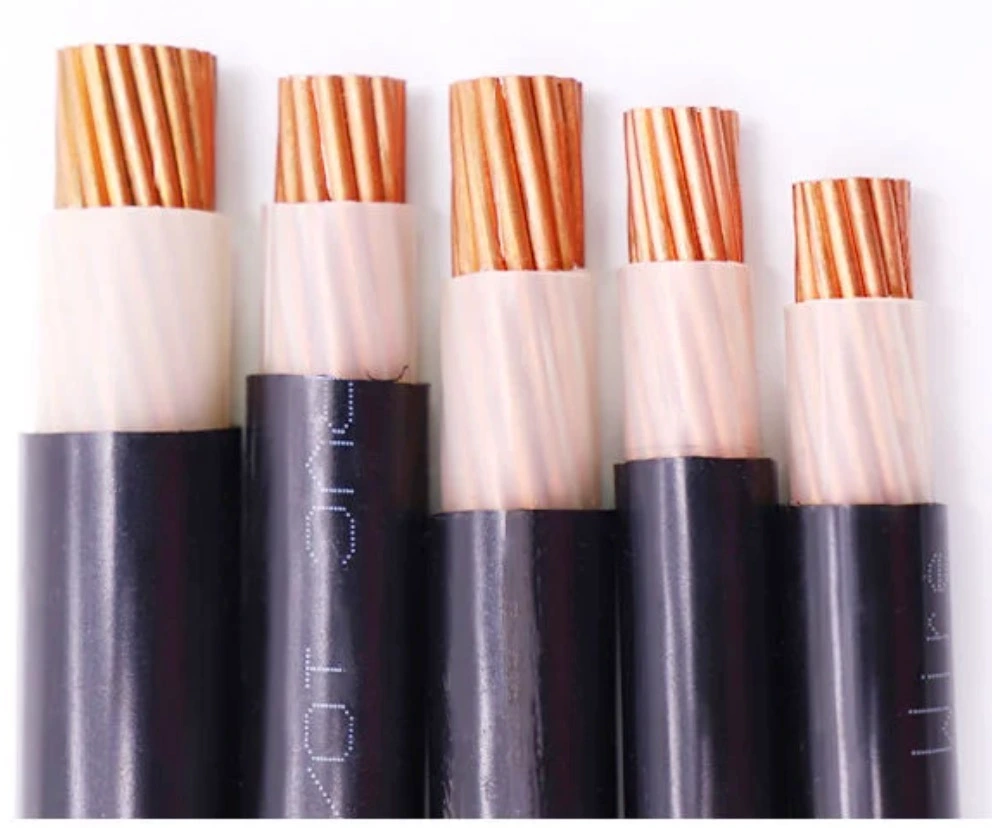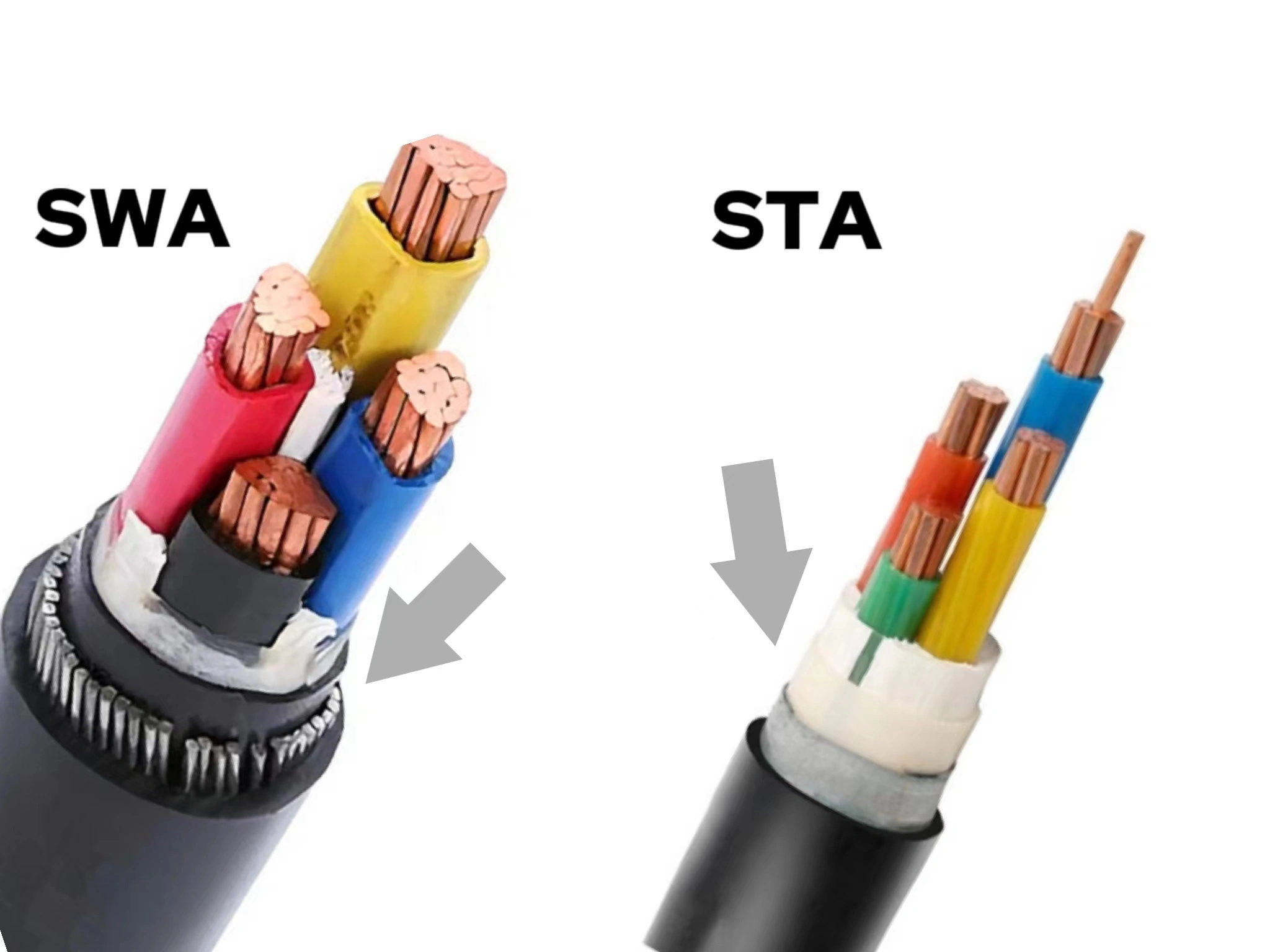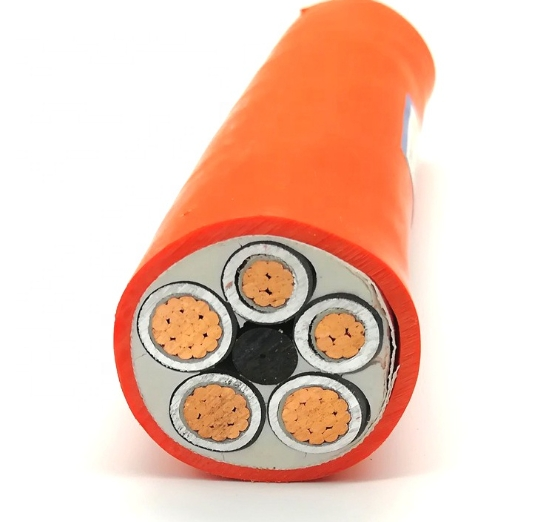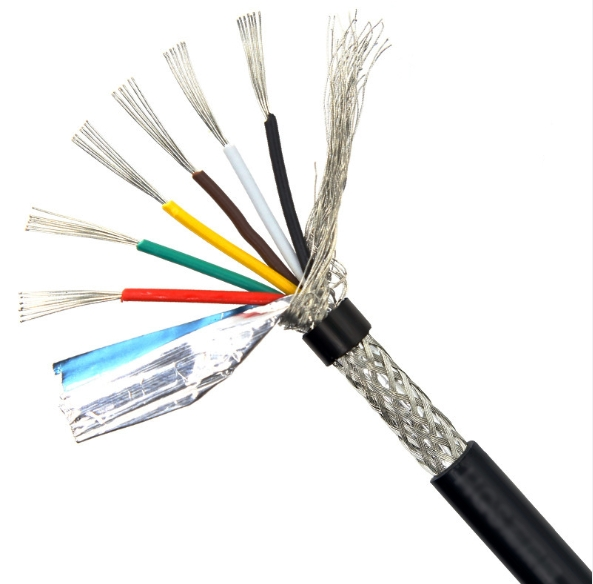Are you facing problems with how to bury underground electrical cables and what to expect during construction? Our guide provides you with solutions to these problems. Moreover, There are some important factors to consider when laying in underground electric wires. Underground solutions present unique advantages, from the initial excavation process to how the cables are protected during burial.If you are seeking assistance to execute an electrical system, along with enhancing your work efficiency, we can provide you with effective solutions that meet your technical requirements.
Construction Of Underground Power Cables
- Conductor: The central component in the transmission of electrical signals. For optimal conductivity and high current loads, it is typically made from copper or aluminum.
- Conductor shield: A semi-conductive layer on the conductor. It is used to improve the performance and service life of the cable by homogenizing the electric field and reducing electrical stress.
- Insulation: The insulation material is cross-linked polyethylene (XLPE) which is highly resistant to heat and chemicals. It surrounds the conductor shield for electrical isolation and to prevent current leakage.
- Shield: Usually, a semi-conductive material is utilized to form a uniform electric field and provide additional insulation protection.
- Bedding: The protective layer above the insulating shield. The bedding helps hold the internal components in place and provides a smooth surface for the armor.
- Armor: The mechanical protective layer. Material is usually steel wire or steel tape. The part of the underground electrical cable provides strength and resistance to external shocks, stresses and rodent attacks.
- Sheath: The outermost layer is typically composed of polyethylene or polyvinyl chloride, shielding the surroundings from physical harm and dampness while keeping the longevity and dependability of the underground electrical cable.
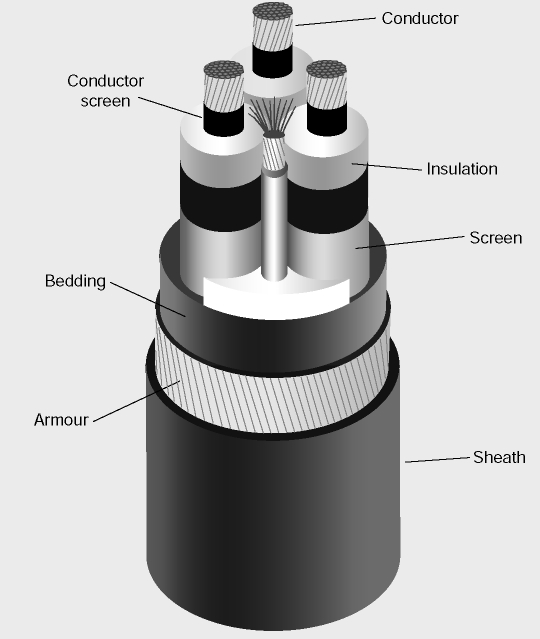
We have come to understand the importance of every component in the functioning of underground electrical cable after fully grasping the intuitive structural schematic and its functions. So what kind of electrical wire can be buried underground?
What are types of underground cables?
- Armoured Cable: Armored cables are designed with a metal protective layer to provide mechanical protection. They are suitable for direct burial in the ground and are effective against physical damage or rodent attacks.
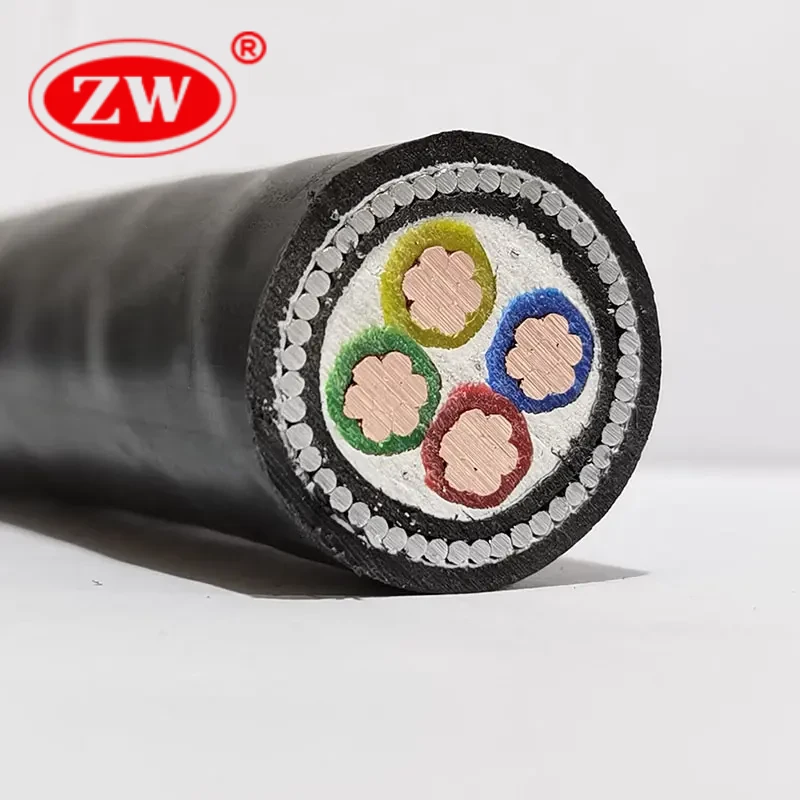
- Low-Voltage Cable: Designed for voltages up to 1kV, LV cables are used in residential and commercial settings for lighting, power, and control circuits. They are ideal for short-distance power distribution and underground internal wiring applications.
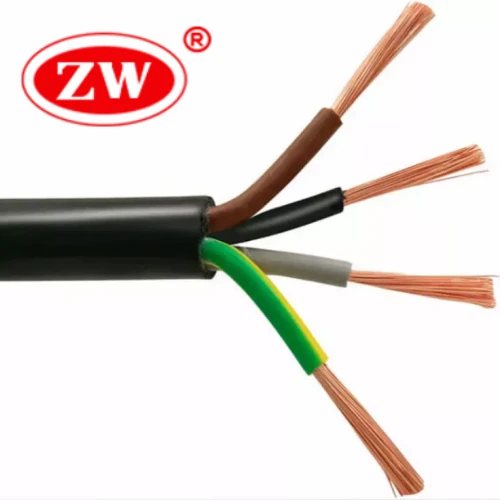
- Medium-Voltage Cable: Medium voltage underground electrical cables operate at voltages between 1kV and 33kV and provide reliable power over medium distances. It connects substations to commercial buildings, industrial plants and residential areas by means of direct underground burial.
- High-Voltage Cable: Directly buried high voltage cables are used for long distance transmission and main distribution networks and operate at voltages higher than 33kV. Typically, they connect power stations to substations and large consumers.
- Fiber Optic Cable: Underground electrical cable can be done with fiber optic cables. They are perfect for delicate areas, data transmission, and telecommunications since they are impervious to electromagnetic interference.
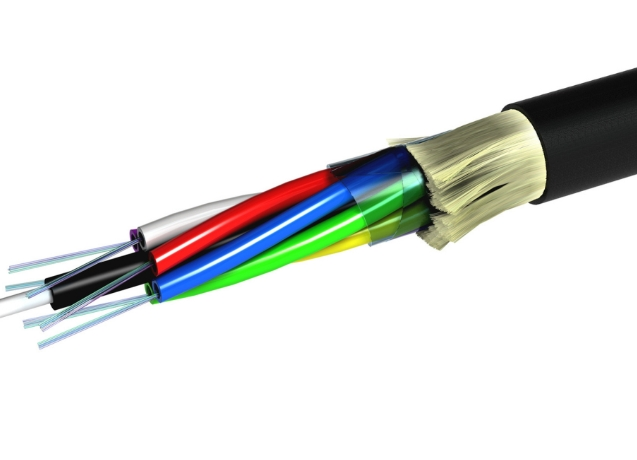
- XLPE Cable: XLPE cable is highly thermally resistant. The type of cable has a higher current carrying capacity and operating temperature, therefore it has a longer lifespan in underground installations.
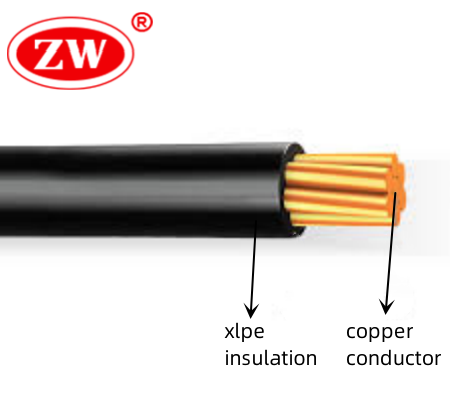
Advantages of underground power cable for house
Overhead vs underground power cables? The choice is essential when it comes to home power supplies. Nonetheless, on account of all of their benefits, underground power connections are growing more and more common in residential areas. We’ll now examine the key benefits of selecting underground electrical cables for the electrical supply in house.
- Enhanced safety: Underground cables are less likely to be involved in incidents caused by outside variables like bad weather, fallen trees, or car crashes. The reduction of potential hazards promotes a safe living environment.
- Improved aesthetics: One notable advantage is that it enhances the overall appearance. Without the clutter of exposed cables, residential areas have a cleaner and more open environment.
- Reliability and durability: Underground electrical cables boast an extended lifespan due to their protection from environmental factors and physical harm, thereby minimizing the necessity for regular replacements or maintenance.
- Environmental compatibility: Underground electrical cables are more flexible in residential development and allow for more creative and effective use of available space, all while posing less of a threat to the environment and wildlife.
But how do we make certain that these advantages are realized? We’ll get a clearer view through the details of the security aspects discussed below.
Underground Electrical Cable Installation Standards
Modern power systems rely on underground electrical cables for safe and efficient energy distribution. However, the process is a challenging endeavor. It requires careful planning and adherence to strict standards to keep safety and reliability.
- Depth of Installation: Underground electrical cables must be buried at a depth that protects them from being disturbed by usual surface activities. Depth for underground electrical wire can vary depending on the type of cable, the soil type, and local regulations.
- Installation Techniques: Whether it is trenching, horizontal directional drilling, or plowing, it depends on the specific environment and soil conditions of the construction site. Each method has its own advantages and we can strike a balance between efficiency, cost and minimizing ecological impact.
- Electrical Standards: We must adhere to electrical standards, such as IEC or local requirements, for underground electrical cable installation, selection, and design.
How to lay underground electrical cable?
The process of laying underground cables is of utmost importance and often requires careful planning and execution. Prior to the commencement of laying underground electrical cables for a project, it is imperative to adhere to a rigorous installation procedure to improve safety and efficiency. Below is a comprehensive guide that outlines the steps to be followed for a successful installation:
Step 1: Understanding underground cables
First, we need to understand the properties of underground electrical cables. It mainly includes the type and application of underground electrical cables or the cost of underground wires so that we can choose the right cable according to our needs.
Step 2: Selecting the right cable
Next, we’ll dive into how to select the right cable:
- Type Selection: Depending on the level of protection required, consider whether armored or unarmored cables are best suited for our project.
- Capacity Considerations: The cable must be able to handle the electrical load of the system. We want to select a cable with a current rating higher than the expected maximum to prevent overheating.
- Size Matters: To minimize voltage drop over distance, it is best to use thicker cables. We carefully consider the length and load of the cable when selecting the cable size.
Also read the following to choose cable sizing:
Step 3: considering the connection strategy
I then strategize how to connect the system:
- Series vs. parallel: For voltage reasons, we choose between series (increasing the total voltage) and parallel (increasing the current but keeping the voltage stable).
Step 4: Installation Process
Now we carry out the key steps to prepare for the start of the installation:
- Line Planning: We carefully plan the path of the cables to assure efficiency and minimize potential damage.
- Cable Preparation: Accurately measure, cut and prepare the cables.
- Protection: Installation of protective underground electrical wire conduits or pipes to protect the cables from potential underground hazards.
- Installation of connectors: Installation of safety connectors suitable for underground electrical cables, keeping a secure connection and protection against moisture.
- Laying of cables: The cables are carefully laid in pre-dug trenches following a planned route and observing local depth regulations.
- System integration: The cables are then integrated into the electrical system and connected to the power supply and distribution points.
- System Inspection and Startup: Once everything is in place, we perform a thorough system inspection according to the electrical code and then start the system to test its functionality.
By performing key steps carefully and meticulously, we can maximize our ability to guarantees that the electrical wire for underground project is carried out efficiently and safely. It is absolutely imperative to comply with local electrical codes and to seek professional assistance for any complex installation.
Underground electrical cable conclusion
Underground electrical cables provide a dependable and secure method of power distribution, both during construction and during installation. We may choose the best underground cable type to satisfy our needs for power by being aware of the advantages of each type.
Consider speaking with a ZW cable manufacturer if you’re trying to modernize your electrical system so that you can get high-quality, industry-standard products. You can be confident that we will effectively and dependably handle your electrical needs.
FAQs
How deep should electric cables be underground ?
The proper depth to bury electrical conduit is influenced by several key factors, such as the specific type of conduit used, the exact location of the installation, and locally established standards.
In general, it is recommended that conduit be installed at least 18 inches below the surface of the ground. However, deeper burial depths may be required in some cases.
e.g. Factors such as heavy vehicle traffic, soil type, and potential environmental impacts may require the conduit to be buried deeper in the ground.
In addition, when laying conduit in frosty areas, deeper burial depths may be required to prevent damage from freeze-thaw cycles.
Can you bury electrical wire underground without conduit?
Direct burial wires can be buried directly into the ground without the need for protective conduit or metal cladding. Whether it’s for residential, commercial or industrial applications, direct burial cable is often a necessity for any type of underground electrical work. Underground electrical cables are durable enough to withstand the harsh conditions below the surface.



